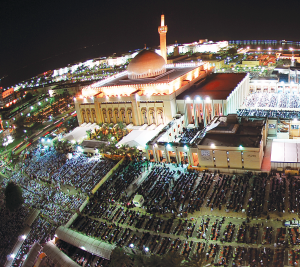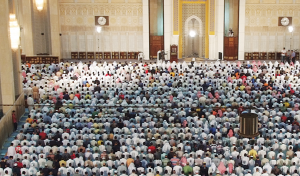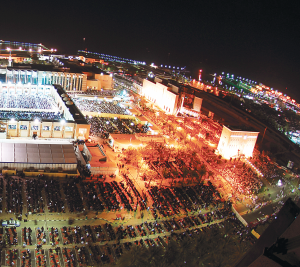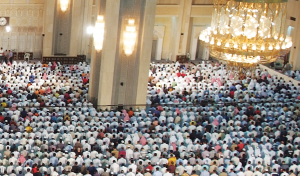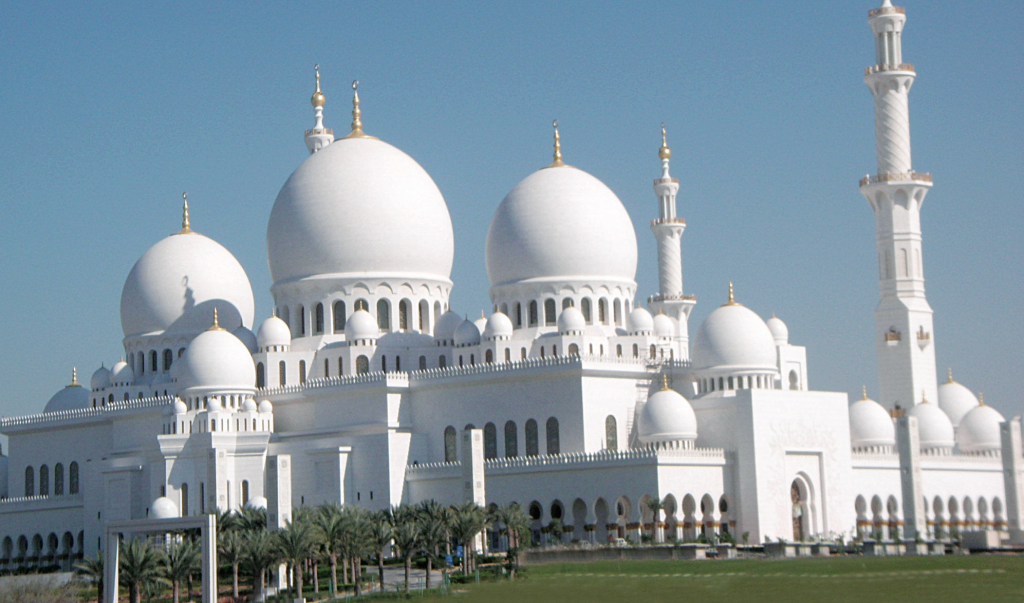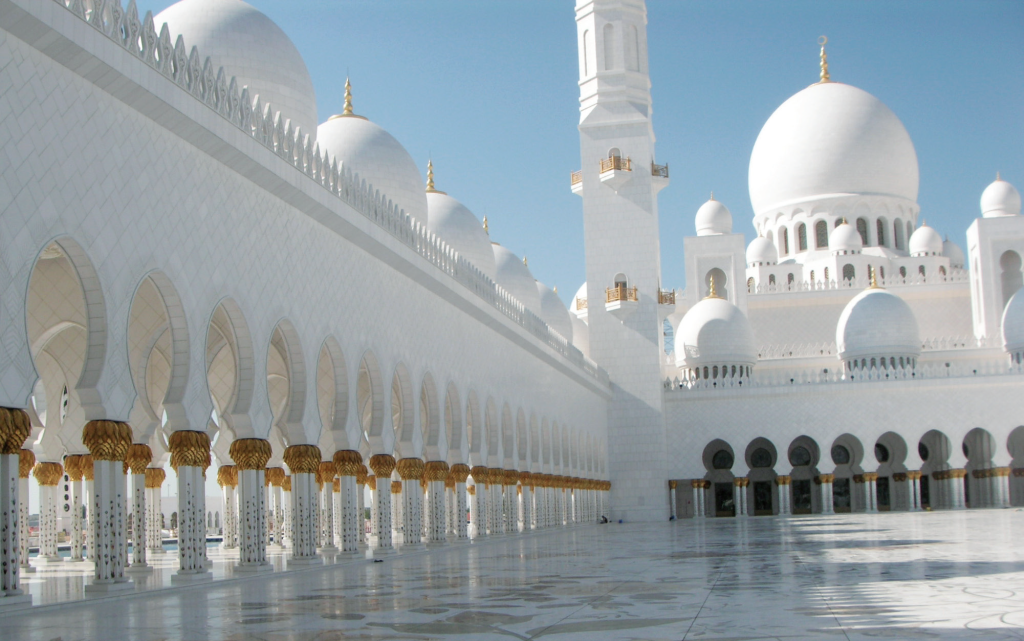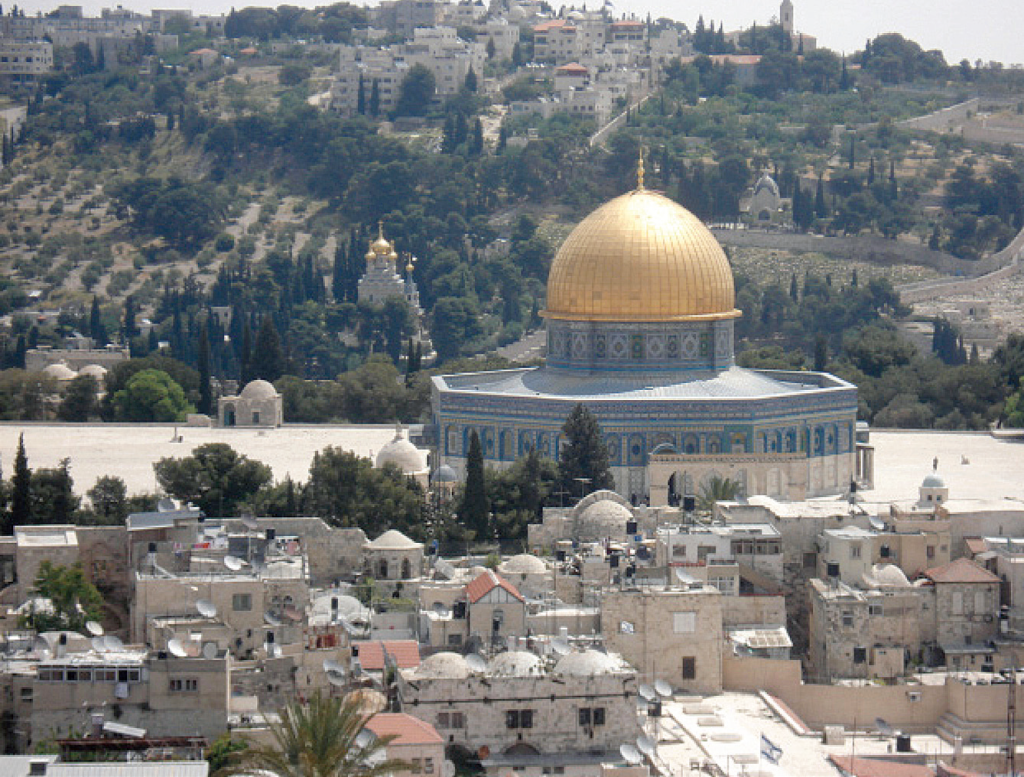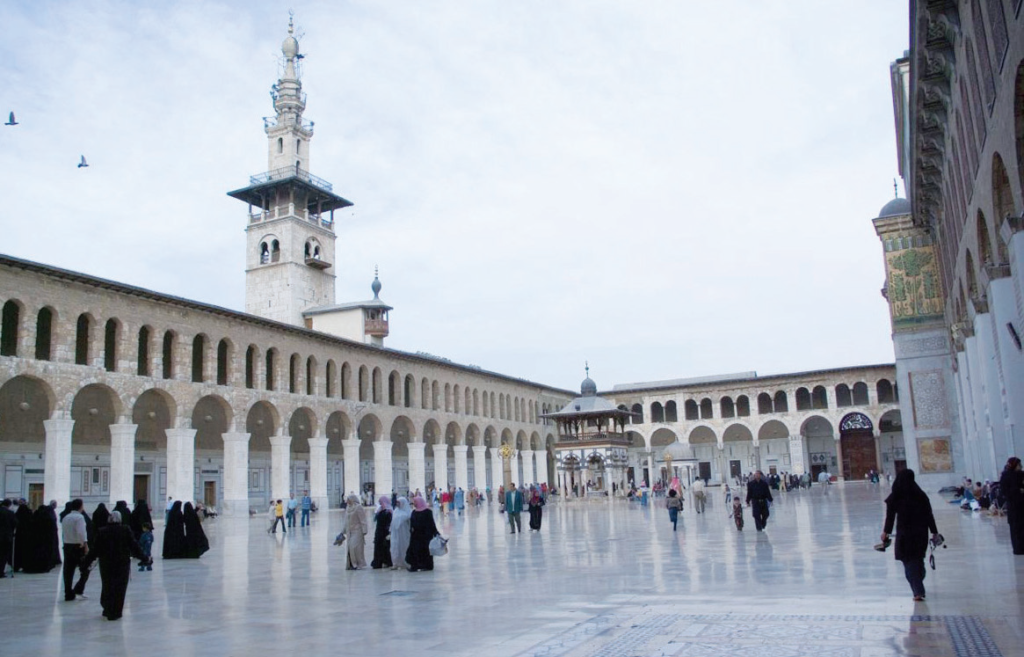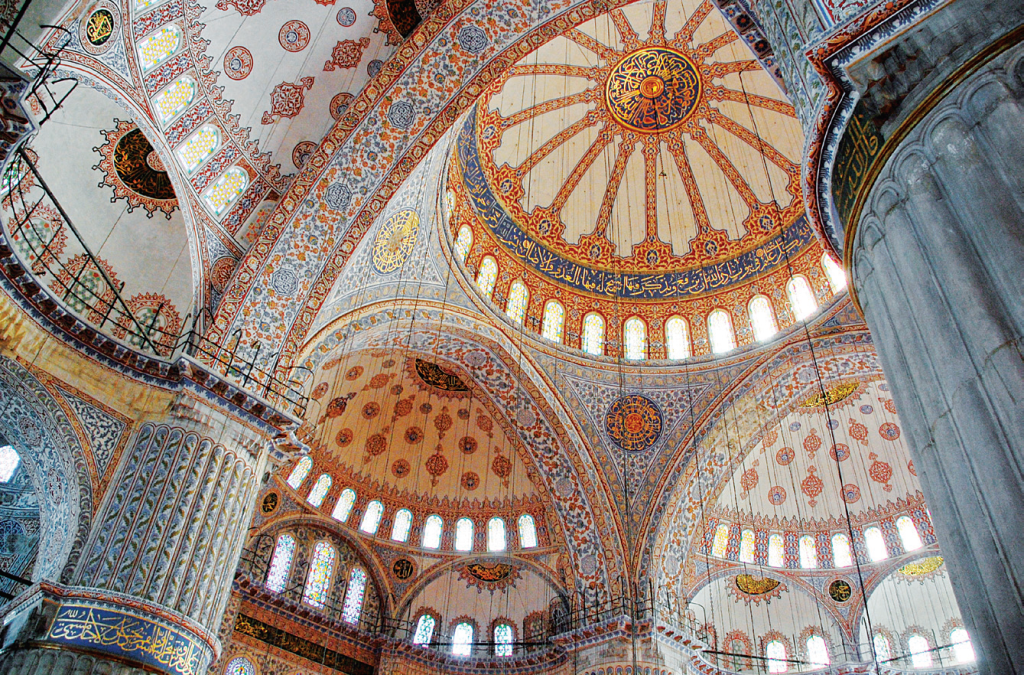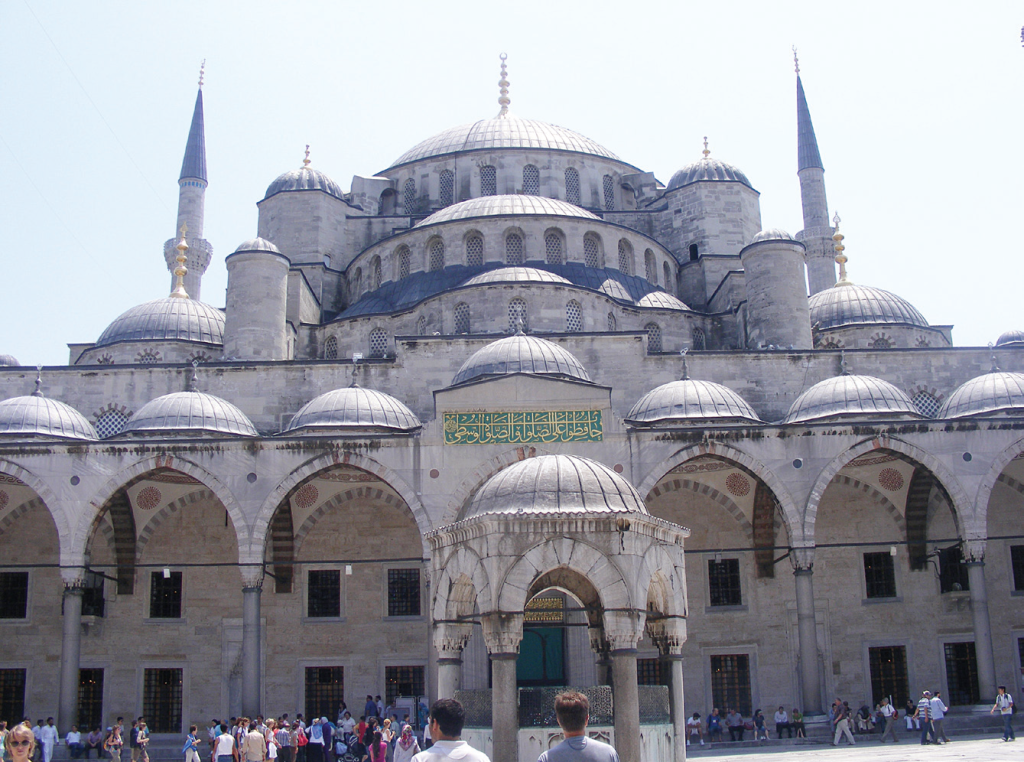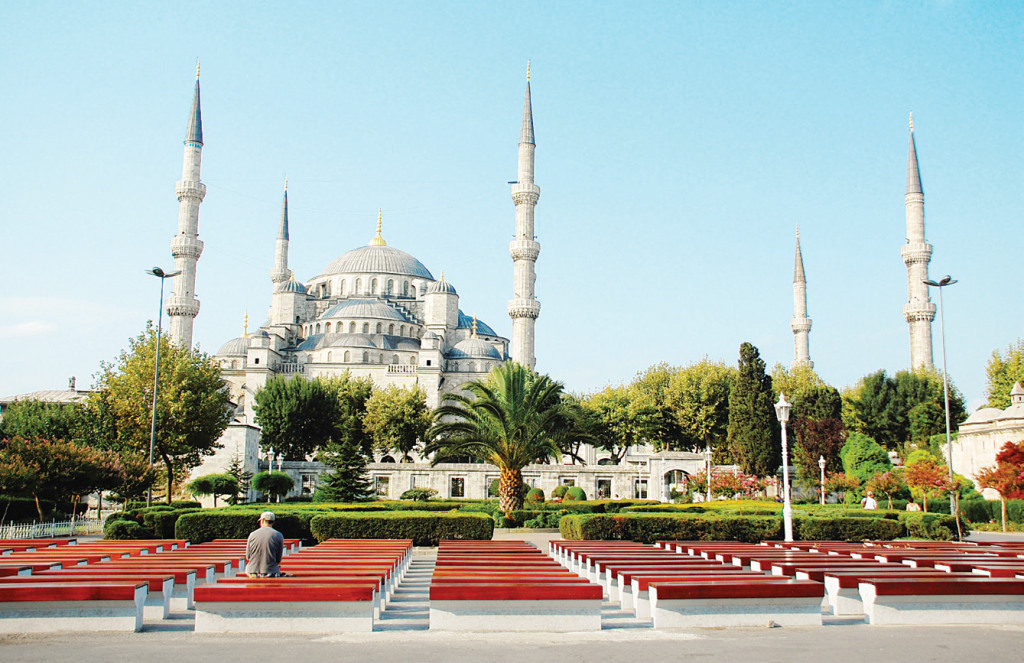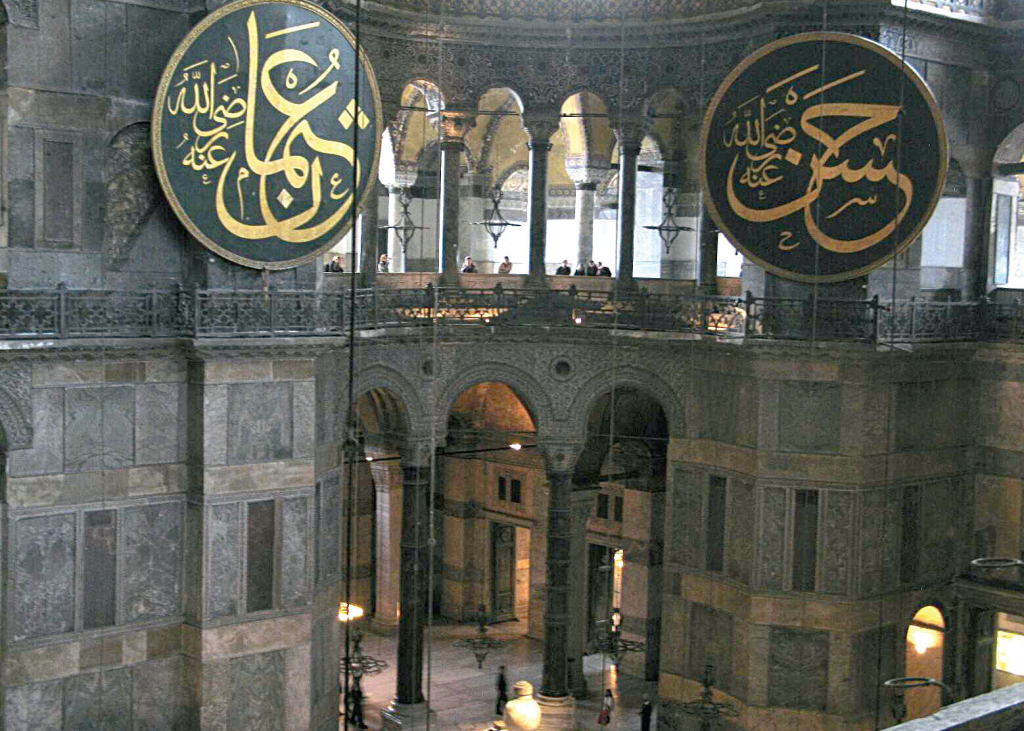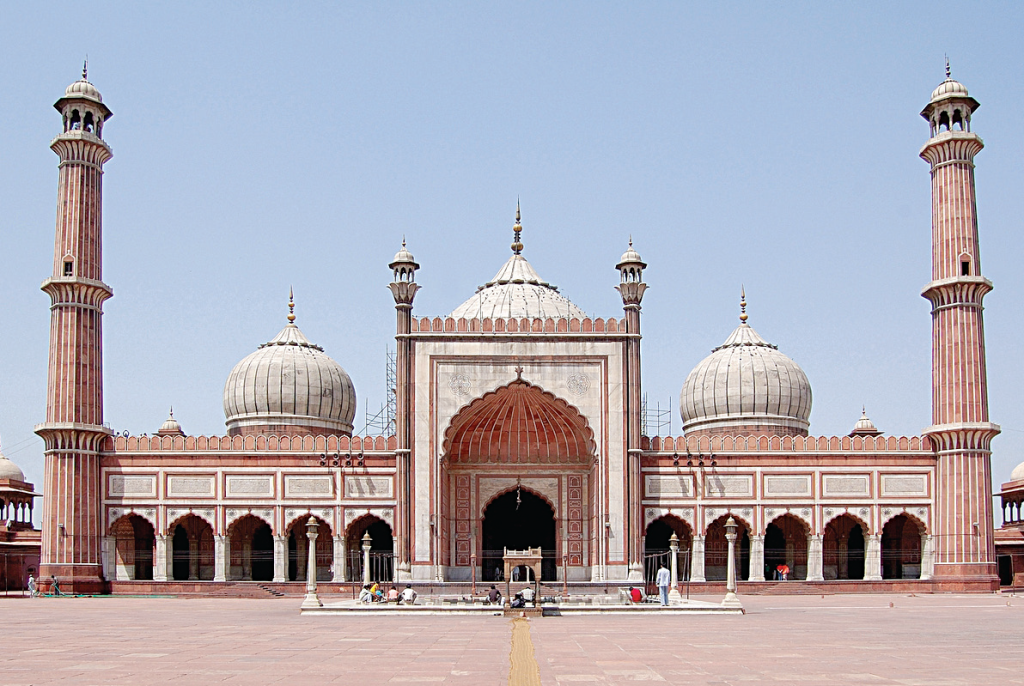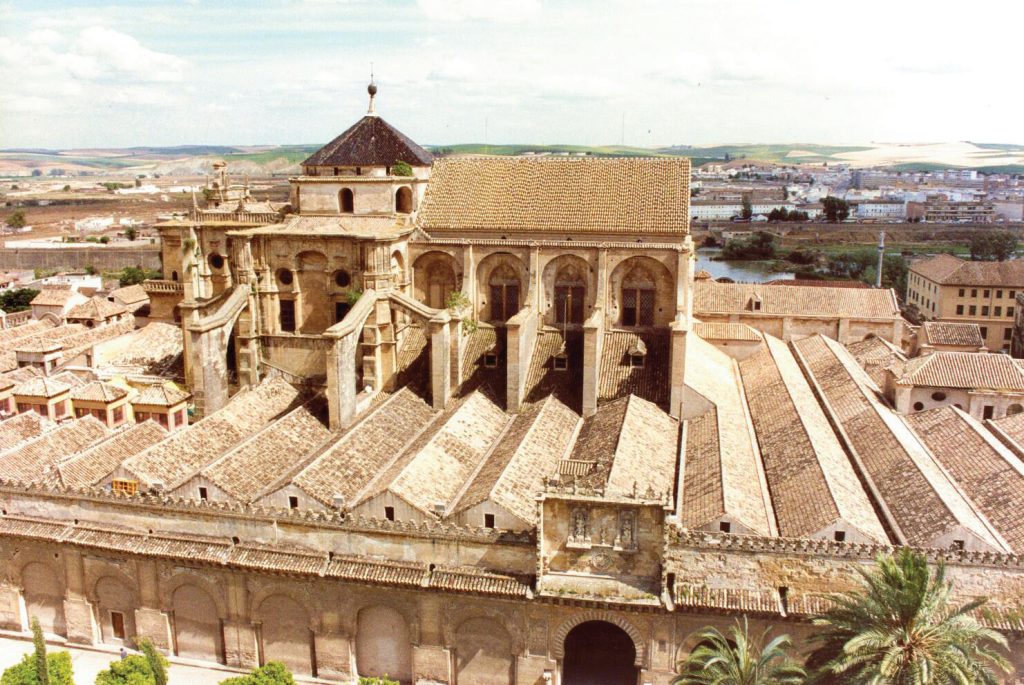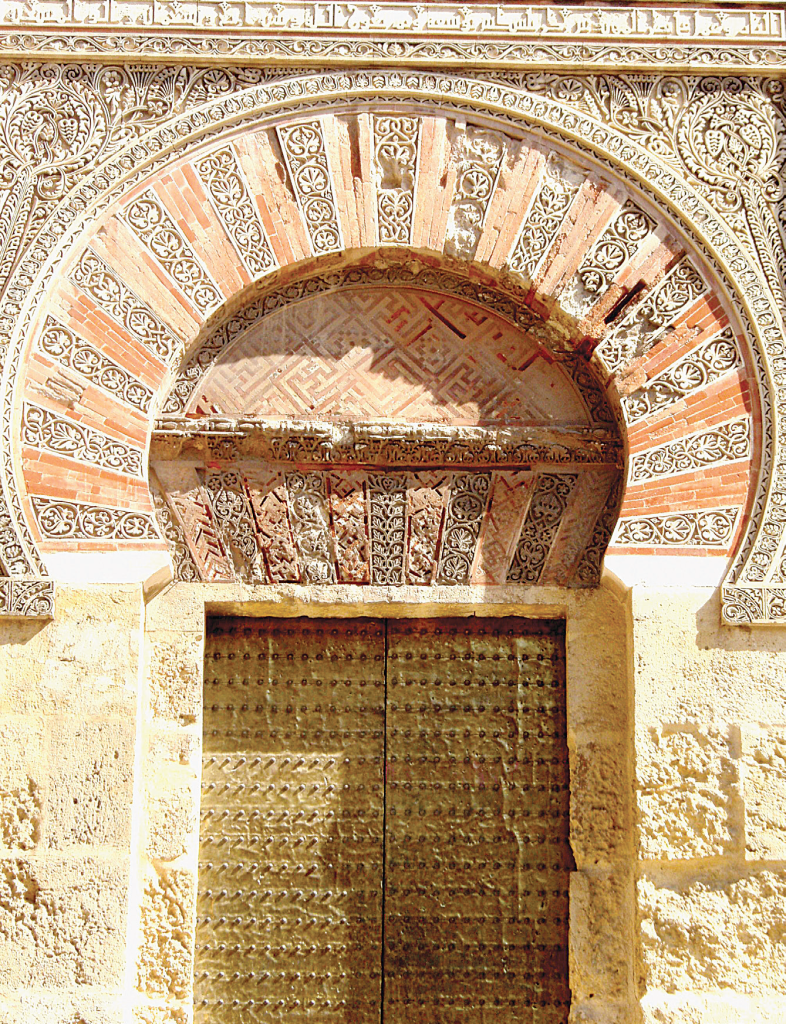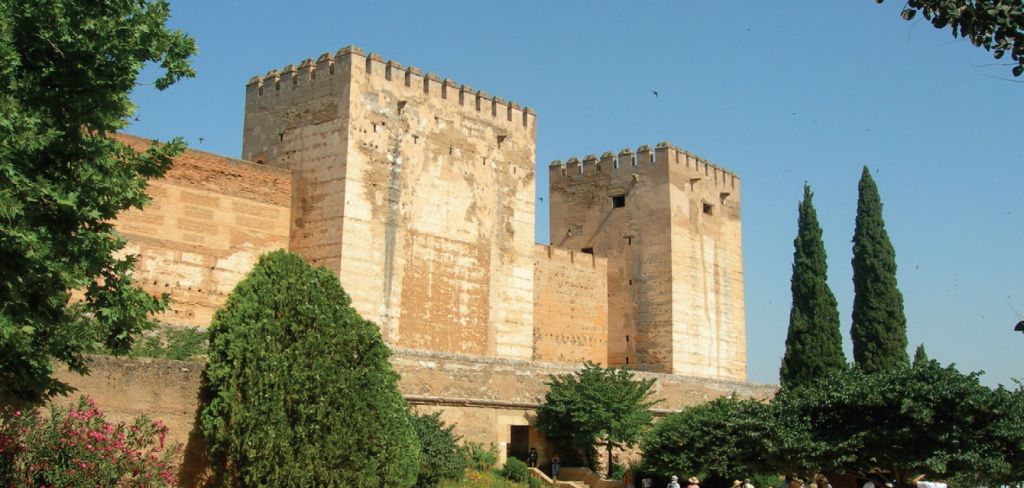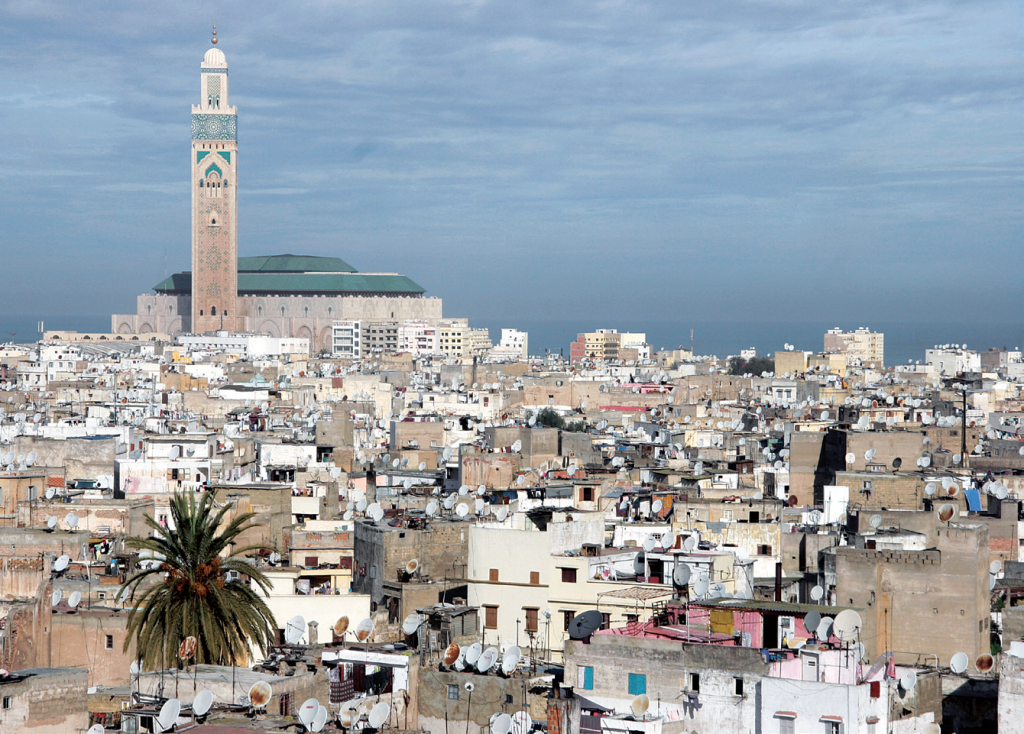Mosques
Cathedral Mosque in Moscow, Russia
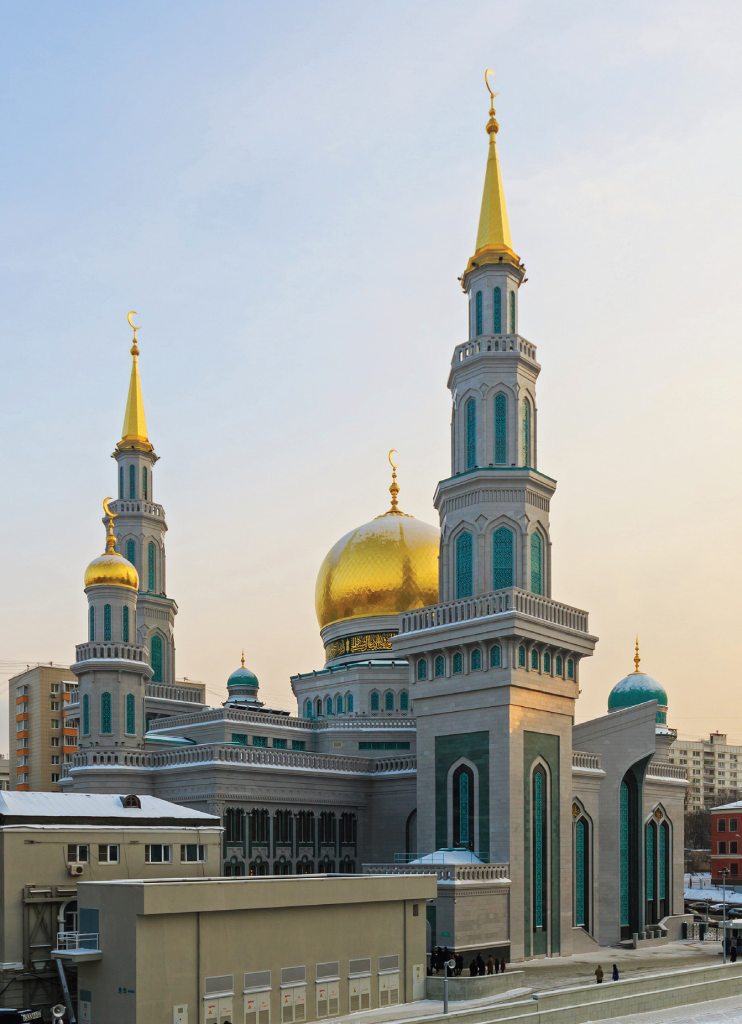
The Grand Mosque of Kuwait:
Photo taken by photographer Ahmad Al Amiri on the 27th night of the lunar month Ramadan. In its peak time, the mosque can accommodate more than 45,000 people including the outdoor areas.
Sheikh Zayed Grand Mosque, Abu Dhabi, U.A.E
It is the largest mosque in the United Arab Emirates and the eighth largest mosque in the world. The mosque site is equivalent to the size of five football fields approximately. It can accommodate more than 40,000 worshippers.
It has 82 domes and 4 minarets each 107 m high. The mosque has the world’s largest carpet, which measures 5627 m2 and the world’s largest chandelier (15 m high and 10 m diameter). The mosque is considered as one of the most important tourist attractions in U.A.E.
The Jumeirah Mosque, Dubai, U.A.E.:
One of the most attractive mosques in Dubai which reflects modern Islamic architecture.
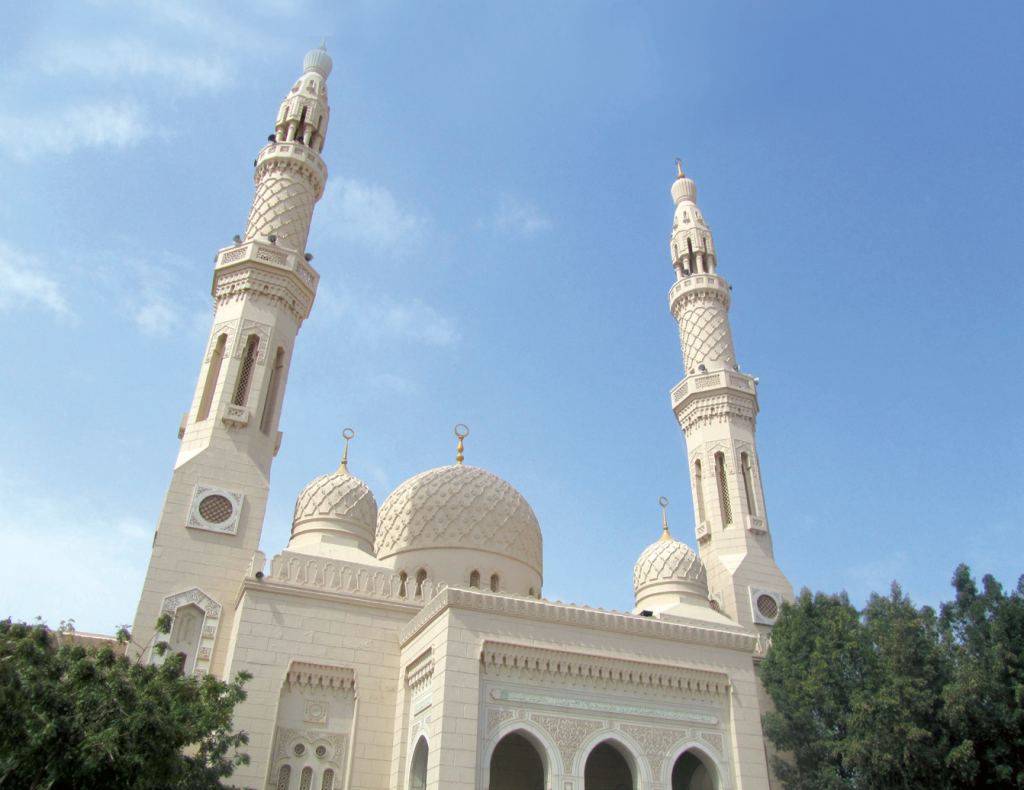
King Hussein Mosque, Amman, Jordan:
Was inaugurated in 2005 as one of the largest mosques in Amman that reflects the modern Islamic art and calligraphy. With its square shape and four minarets, it overlooks the city of Amman as it was built over a mount 1000 m approx. above sea level.
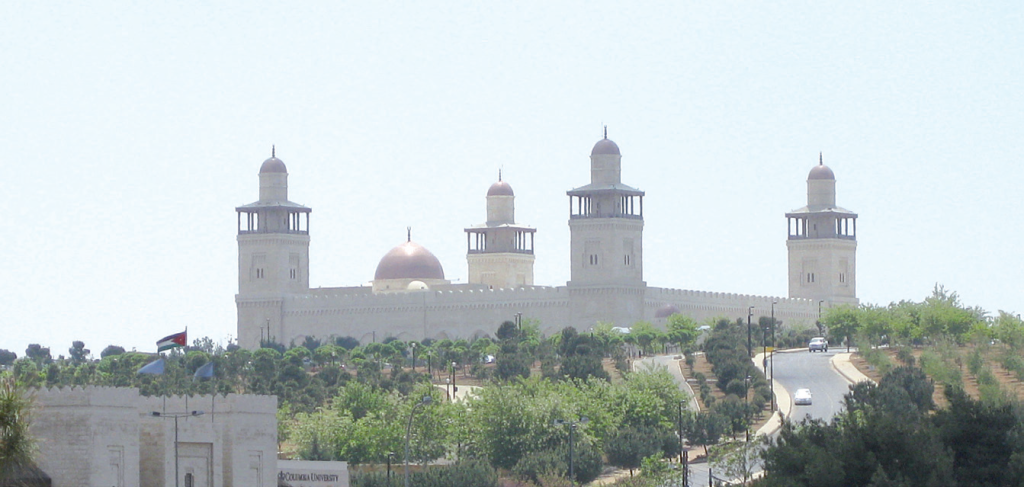
Ahmed Al-Fateh Mosque, Kingdom of Bahrain – Juffair:
Was opened in 1988 by the late Amir of Bahrain, Sheikh Issa bin Salman Al-Khalifa. The mosque occupies an area of 6,500 square meters and it can accommodate up to 7000 worshippers. The mosque reflects a transparent blend of Islamic architecture and the local heritage.
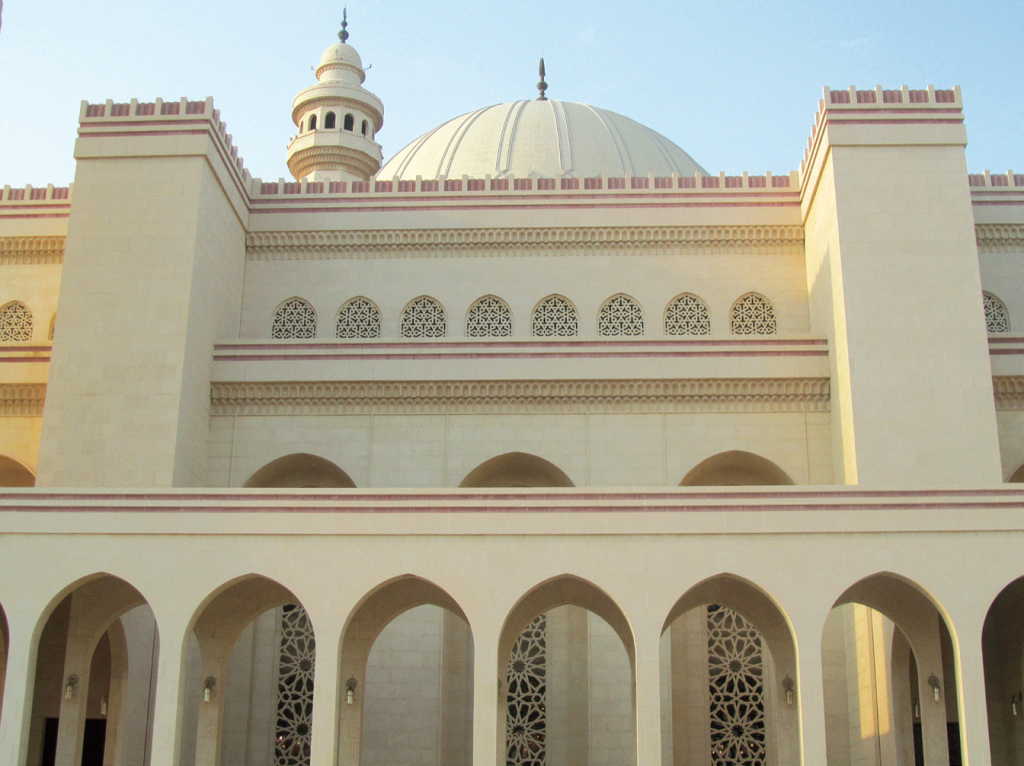
Al-Saleh Mosque, Sanaa, Yemen
It is the largest mosque in Yemen. It was opened in 2008, with an overall area of 27,300 m2 approx. and a capacity of 40000 worshippers. The mosque was built in a Yemeni architectural style. It includes 15 wooden doors as well as 6 large minarets.
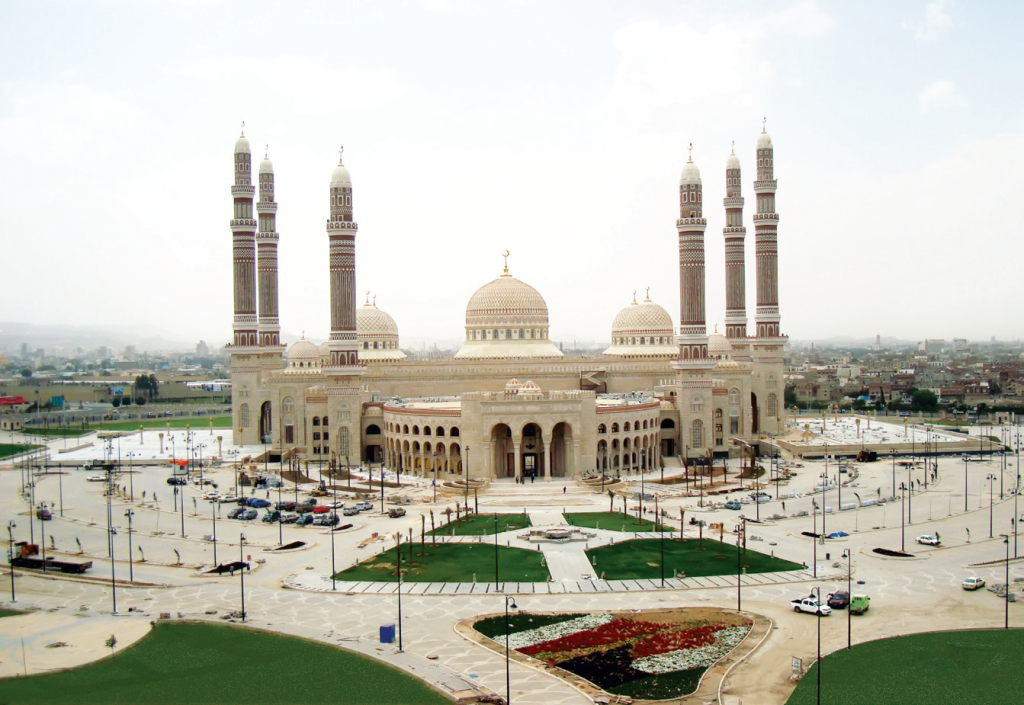
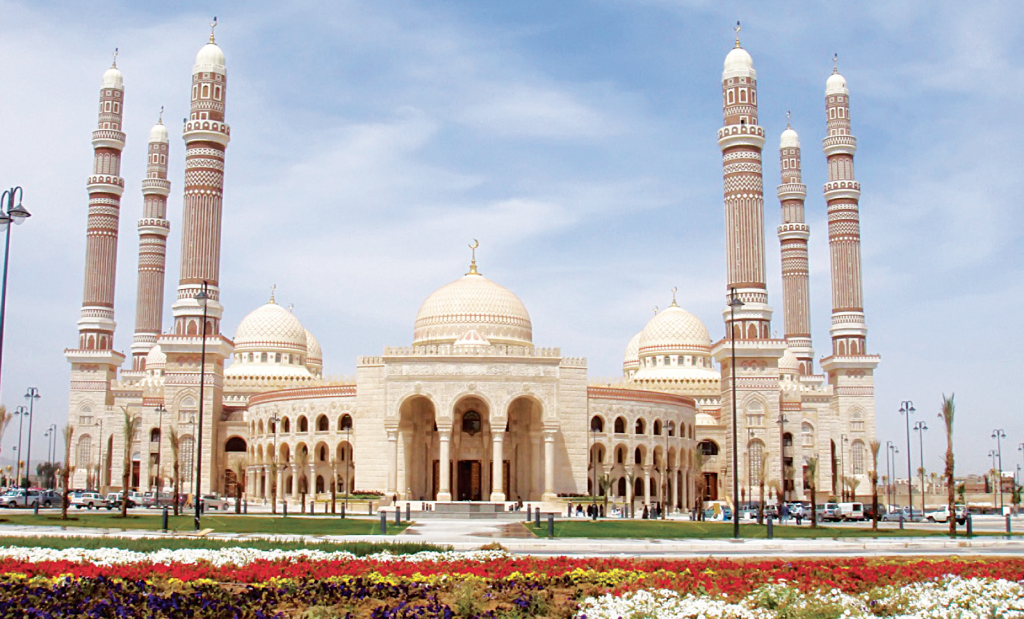
Sultan Qaboos Grand Mosque, Muscat, Oman:
It is the largest mosque in Oman. It was opened in 2001 and includes the world’s second largest hand-woven carpet and chandelier. (mosque area – 416,000 sq. meters, complex of the mosque extends to 40,000 m2).
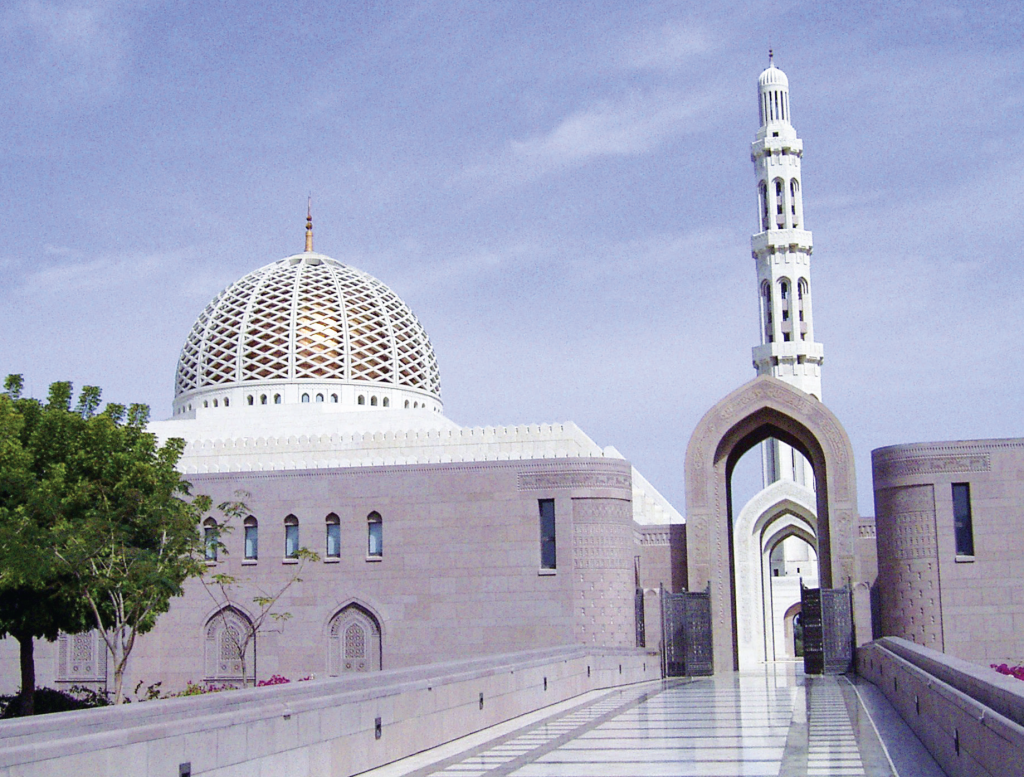
Al-Aqsa Mosque, Jerusalem
It is believed by Muslims that it is the second mosque placed on the earth for humanity to worship one God (Note: the first one is the sacred mosque in Makkah). Al-Aqsa Mosque is a sacred place for Muslims and used to be the first Qiblah in Islam (the place Muslims used to direct their faces towards it when praying to God). After Quranic revelation from God, Muslims were commanded to change the “Qiblah” towards the Mosque of Sanctuary in Makkah, which has the Kaabah (the cubical building built by Prophet Abraham (pbuh) to worship one God). The total area of Al Aqsa Mosque/ Sanctuary is about 14.4 Hectare or 144,000 m2. It includes two important shrines, the “Qibli Masjid” (where the imam usually leads the prayers) and the “Dome of the Rock”.
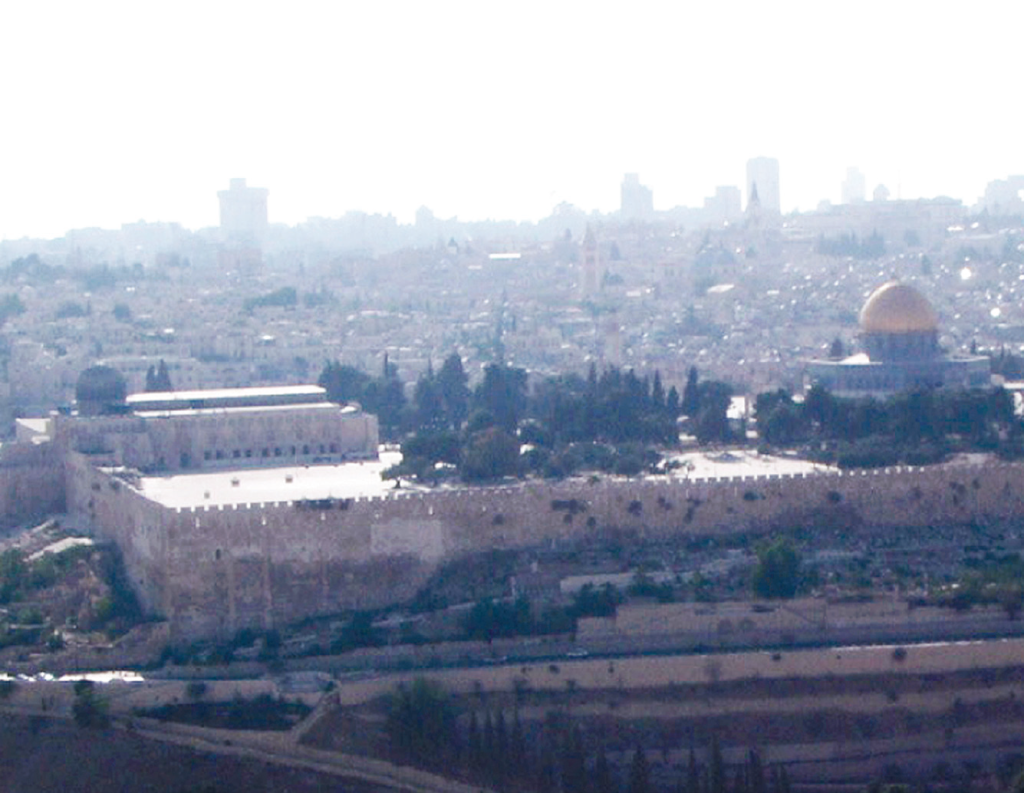


Qibla Masjid
Dome of the Rock, Jerusalem:
It is an Islamic shrine and a mosque built in the period of 688-692 CE by the Umayyad Caliph Abdul Malik Bin Marwan over the rock that is believed by Muslims the place where Prophet Muhammad (pbuh) ascended to the Heavens. It is an octagon building with a golden dome of 29.4m diameter.
Umayyad Mosque, Damascus, Syria
The Ummayad Mosque, established (706 -715 CE) under the Umayyad caliph Al Walid. It is one of the largest and oldest mosques in the world that has a great architectural importance (mosque interior is approx. 4000m2). In 2001 Pope John Paul II visited the mosque and it was the first time a pope paid a visit to a mosque. The minaret in the southeast corner is called the Minaret of Jesus as many Muslims believe that when Jesus returns, he will descend near this Minaret.
The Great Mosque of Samarra, Samarra, Iraq:
It is a 9th century mosque which is located in the Iraqi city of Samarra. The mosque was commissioned in 848 and completed in 851 by the Abbasid Caliph Al-Mutawakkil .
The Great Mosque of Samarra was at one time the largest mosque in the world; its minaret, the Malwiya Tower, is a vast spiraling cone (snail shaped) 52 meters high and 33 meters wide with a spiral ramp. The mosque had 17 aisles, and its walls were paneled with mosaics of dark blue glass. The minaret is in the style of Babylonian ziggurat .

Sultan Ahmet Mosque, Istanbul, Turkey:
It is better known as the “Blue Mosque”, with cascading domes and six slender minarets. Commissioned by Sultan Ahmet of the Ottoman Empire in the 17th century (construction began in 1609 and took seven years).
Aya sofya, Istanbul, Turkey :
Aya Sofya (Hagia Sophia) in Istanbul – Turkey. It is a former Byzantine church which then served as an Ottoman mosque for approx. 500 years. Now it is a museum and a major tourist attraction place.
Taj Mahal, Agra, India :
It was built by Shah Jahan (1592–1666) in memory of his wife. Due to its unique architectural design, it is considered as one of the most important tourist attractions in the world. Next to Taj Mahal, Shah Jahan built a mosque which is part of the Taj Mahal complex. Engraved on Taj Mahal walls, there are full chapters ” Surahs” from the Quran.
Please note that Islamic teachings prohibit building structures over graves. A tomb is a structure above ground, and a grave is the hole below ground. According to the teachings of Prophet Muhammad, the tomb should not be more than one “shibr” i.e. about 20 cm above the ground. After putting the body in the grave, the excavated sand is collected and packed over the grave in a way that looks like a camel hump over the grave.
In addition, Prophet Muhammad recommended people visit cemeteries to remember the fact that every living creature will die and will return to his or her Lord. It is God only to be glorified, exalted and worshiped not human beings.

Jama Masjid in New Delhi, India
The largest mosque in India, built in 1656
Faisal Mosque, Islamabad, Pakistan
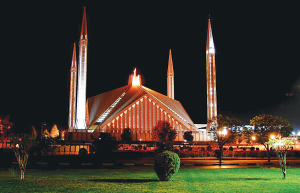
Lahore Fort, Lahore, Pakistan

Star Mosque, Dhaka, Bangladesh
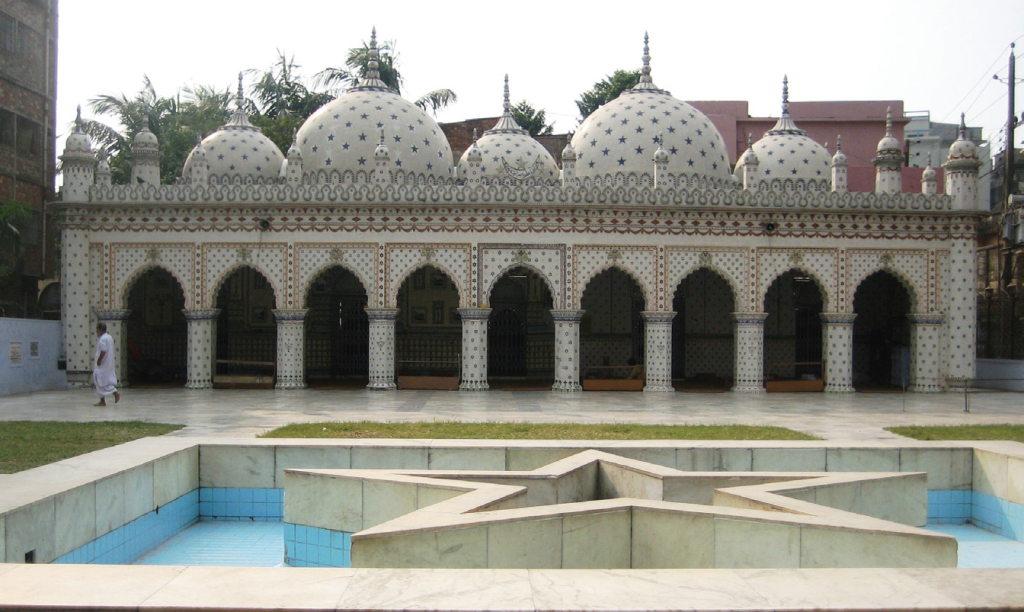
Auburn Gallipoli Mosque, Sydney, Australia
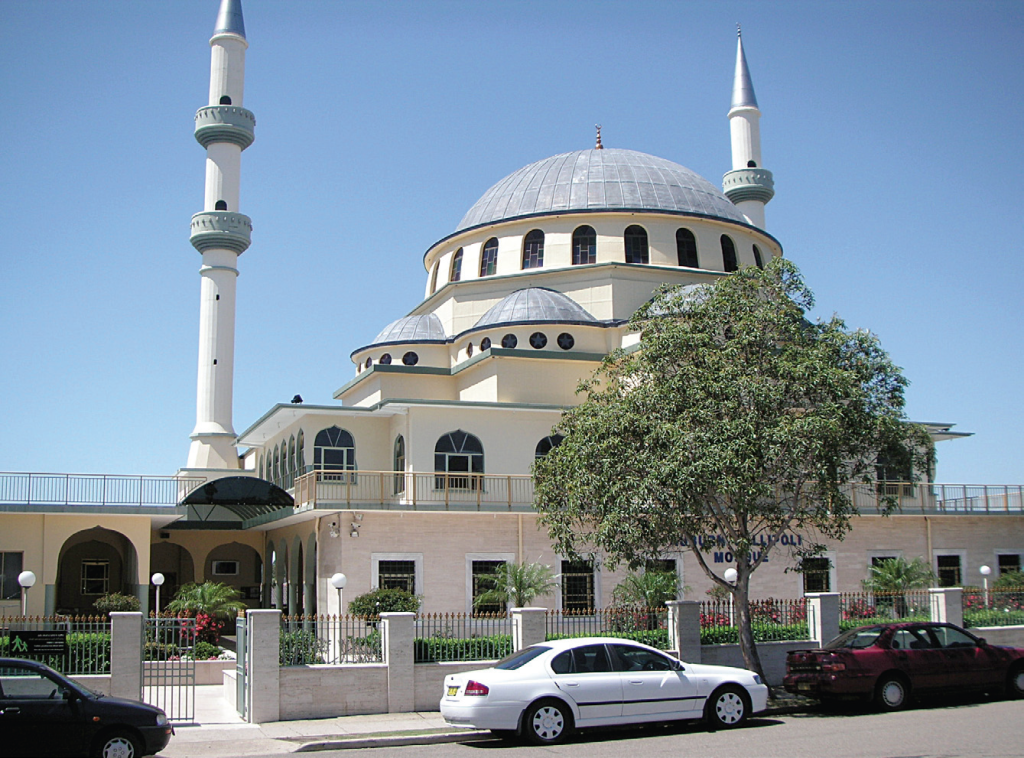
Sultan Mosque, Singapore

Sultan Omar Ali Saifuddin Mosque, Bandar Seri Begawan, Brunei Darussalam
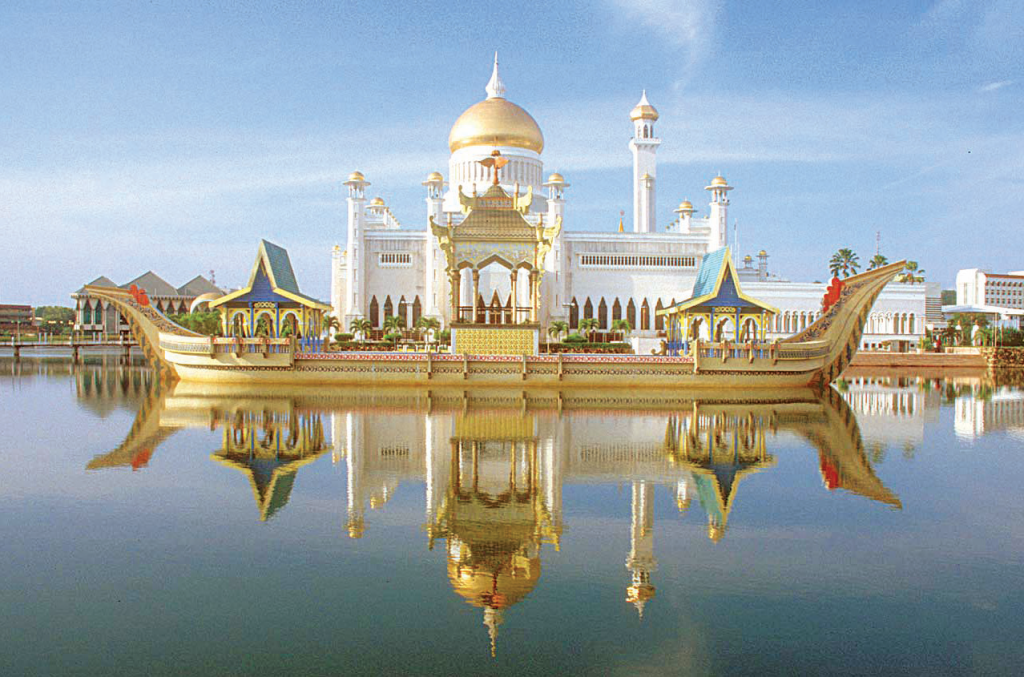
Tokyo Jami, Japan

Pattani Central Mosque, Thailand

The Crystal Mosque, Kuala Terengganu, Malaysia
The mosque is mainly made of crystal. It is located at Islamic Heritage Park on the island of Wan Man. It was officially opened in 2008.
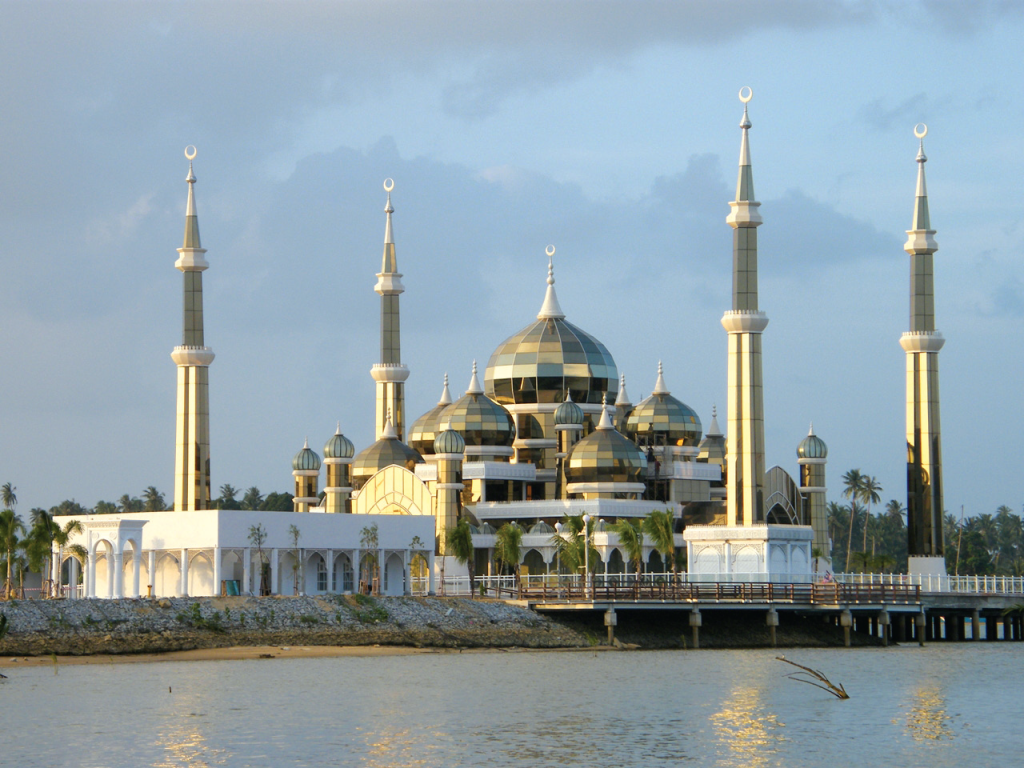
Putrajaya Mosque, Malaysia

Kuantan Mosque in Malaysia

Ubudiah Mosque, Perak, Malaysia
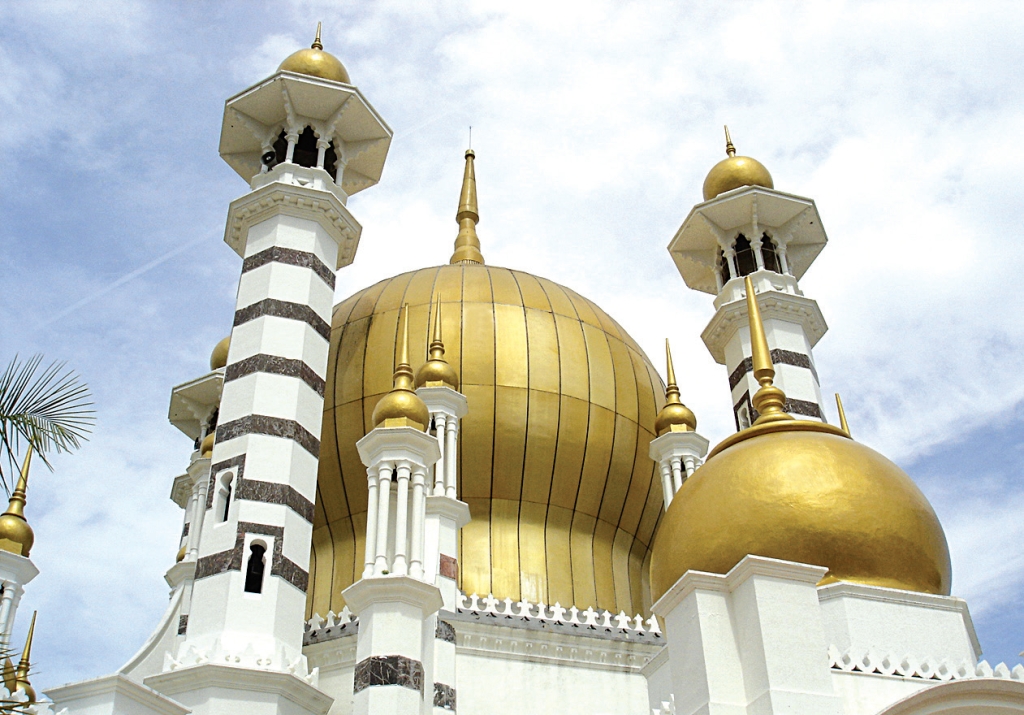
Al-Azhar Mosque, Cairo, Egypt
Established in 971 CE, connected with one of the oldest operating universities in the world (opened 988 CE).
The Ahmad Ibn Tulun Mosque, Cairo, Egypt:
Completed in 879 CE, one of the largest in the world, (26,318 m2) it is also famed for its lovely architecture and unique minaret.
The Mezquita of Cordoba, Cordoba, Spain
Mezquita is the Spanish word for “mosque”. It is an 8th century mosque designed by Islamic architects under the supervision of the Emir of Cordoba, Abdul-Rahman II (822-852). Today, the Mezquita is the cathedral of Cordoba (Cathedral of Our Lady of the Assumption).
Alhambra Calat, Spain
Also called “the red fortress”. It is a palace and fortress complex, constructed during the ruling of the Muslim Sultan of Granada (1353-1391 CE). Today it is one of Spain’s major tourist attractions exhibiting the most famous Islamic architecture in Spain. Note: Within Alhambra, the Palace of Roman Emperor Charles V was erected in 1527 CE.
Masjid Istiqlal, Jakarta, Indonesia
This is the largest mosque in Southeast Asia. Istiqlal means independence. It is located side by side with the largest cathedral in Indonesia.
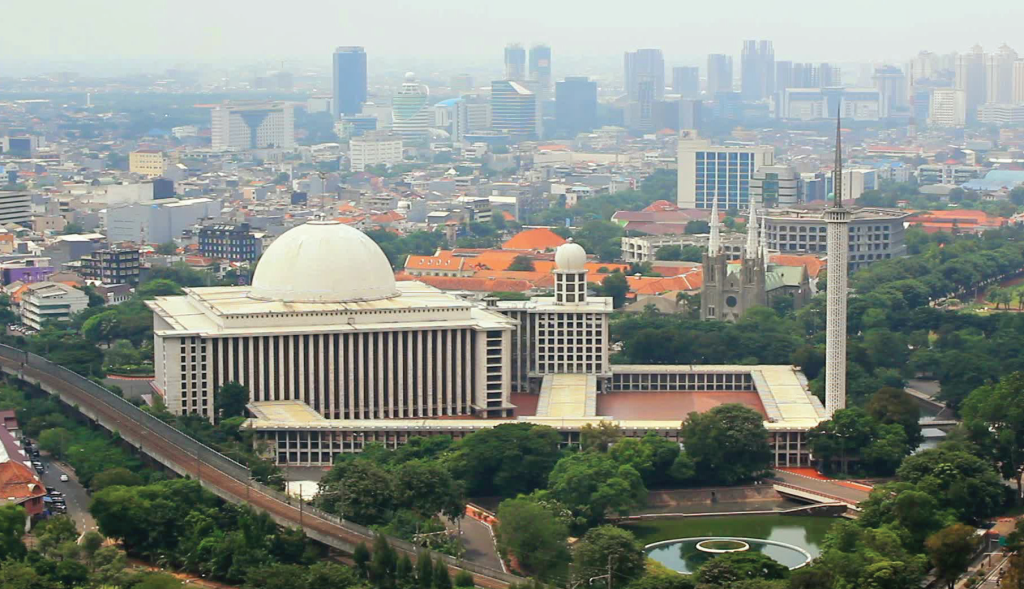
Masjid Raya Baiturrahman, Banda Aceh:
This mosque is one of the buildings that survived the tsunami in 2004. After the tsunami the mosque served hundreds of people as a temporary shelter.
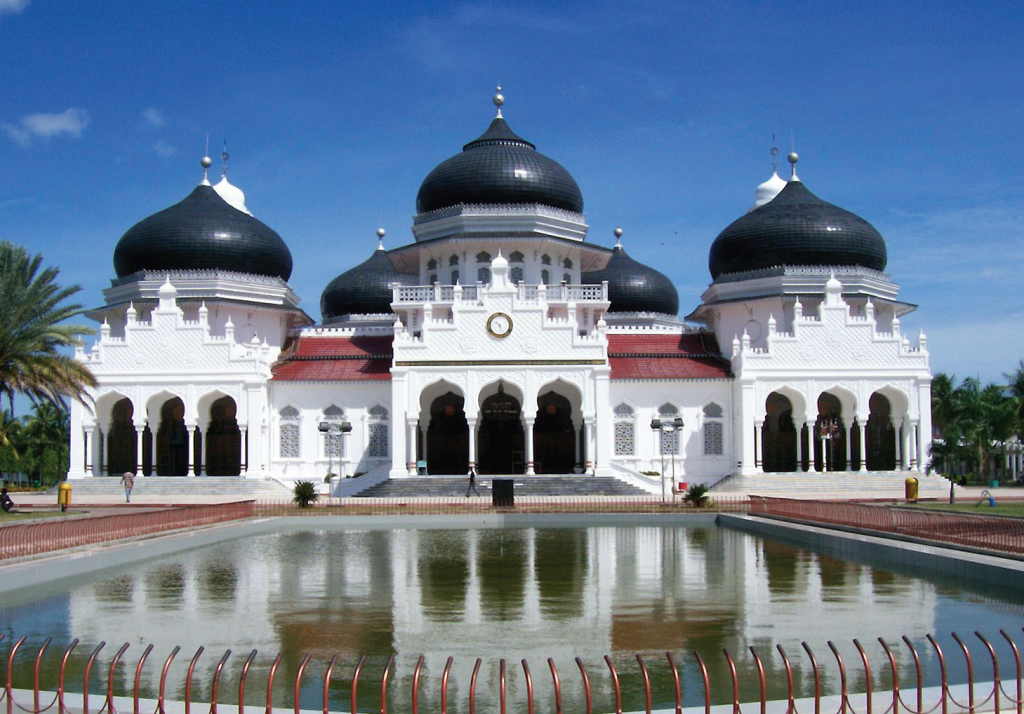
The Hassan II Mosque, Casablanca, Morocco
It was completed in 1993. Designed by French architect Michel Pinseau. The Great Mosque’s minaret is the tallest structure in Morocco and the tallest minaret in the world (210 meters ). At night, lasers shine a beam from the top of the minaret toward the Mosque of Sanctuary in Makkah. (Capacity: 25,000 worshippers)
The Karaouine University and Mosque, Fes, Morocco
Founded in 859 CE by a women called Fatima Al-Fihri. It is the oldest existing, continually operating higher educational institution in the world according to UNESCO and Guinness World Records. According to some researchers the Karaouine University was a model for European universities and it is one of the oldest still operating universities.
Kipchak Mosque in Ashgabat, Turkmenistan

Azadi Mosque, Ashgabat, Turkmenistan

Shir Dor Madrasah, Samarkand, Uzbekistan
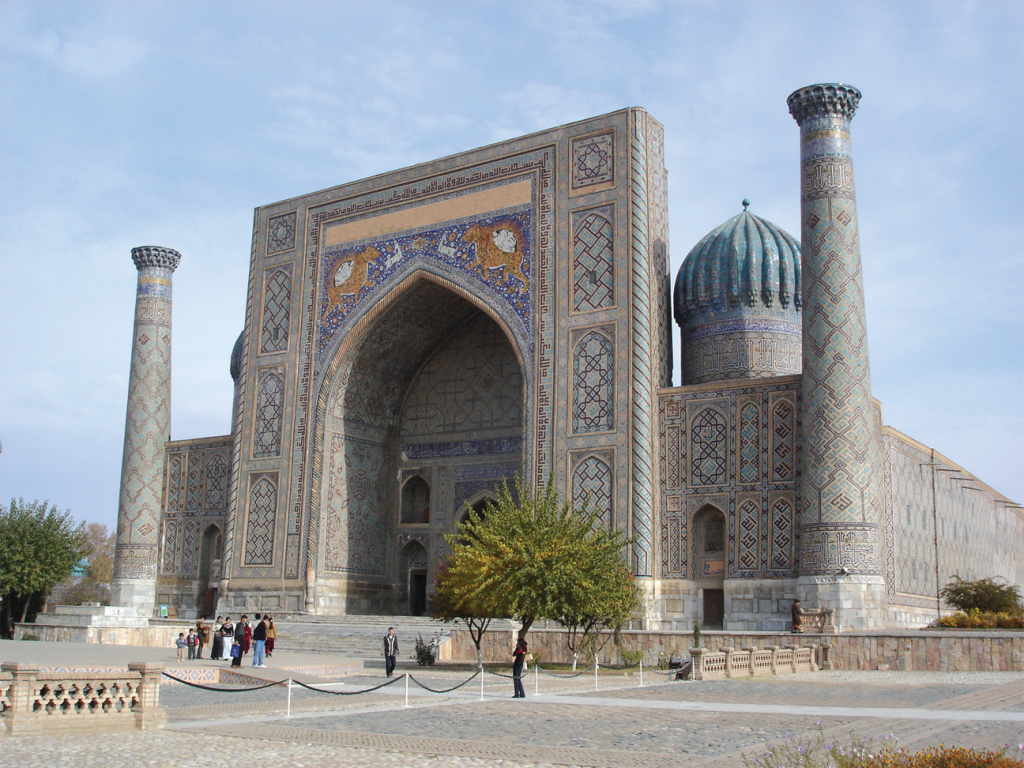
Kalon Mosque, Bukhara, Uzbekistan

The Grand Mosque of Paris, France
It is the largest mosque in France. It was founded after World War I. Inaugurated on 15th July 1926.

Penzberg Mosque, Penzberg, Germany
The minaret is engraved with words of the “Azaan”, the Muslim call for the daily prayers. The Arabic calligraphic design was made by award winner calligrapher Mohammed Mandi from U.A.E.
Note: In Islam there are five prayers a day. The following is a translation of the words of the “Azaan” (call for each prayer). Each statement is repeated twice: Allah is the Greatest. I bear witness that there is no deity but Allah. I bear witness that Muhammad is the Messenger of Allah. Come to the prayer. Come to the real success. Allah is the Greatest. There is no deity but Allah.
The Great Mosque of Xi’an, China
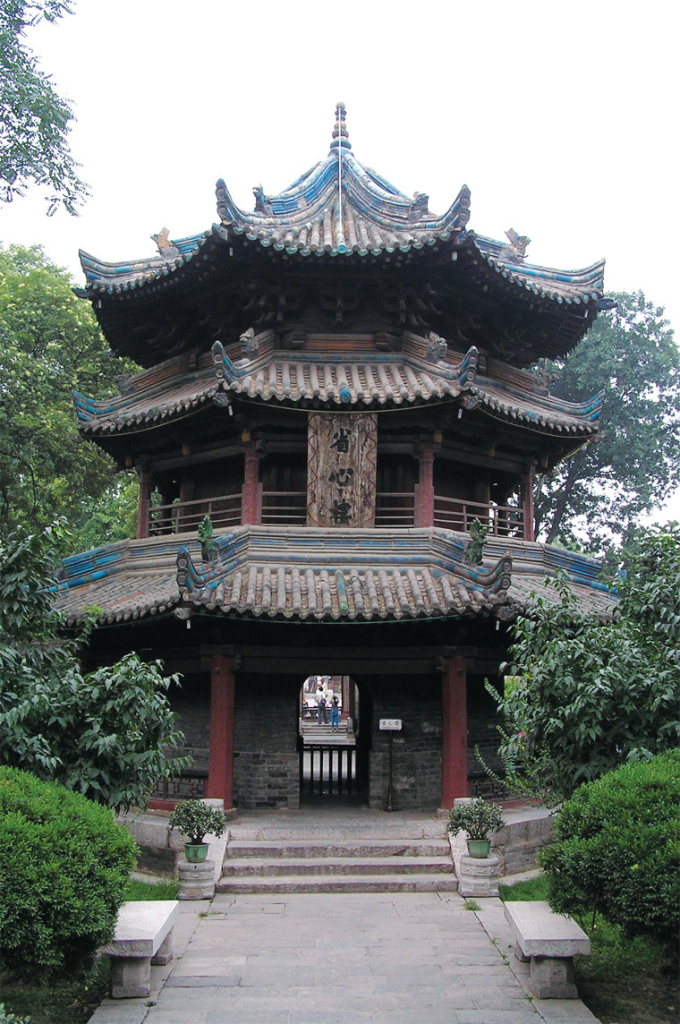
Grand Mosque, Semarang, Indonesia

Hui Mosque, Ningxia, China

Auwal Mosque in Bokaap, Cape Town, South Africa
Masjidul Quds in Gatesville, Cape Town, SA

Nizamiye Mosque in Midrand, Johannesburg, SA

Grand Mosque, Bobo Dioulasso, Burkina Faso

Djenné Mosque, Djenné, Mali
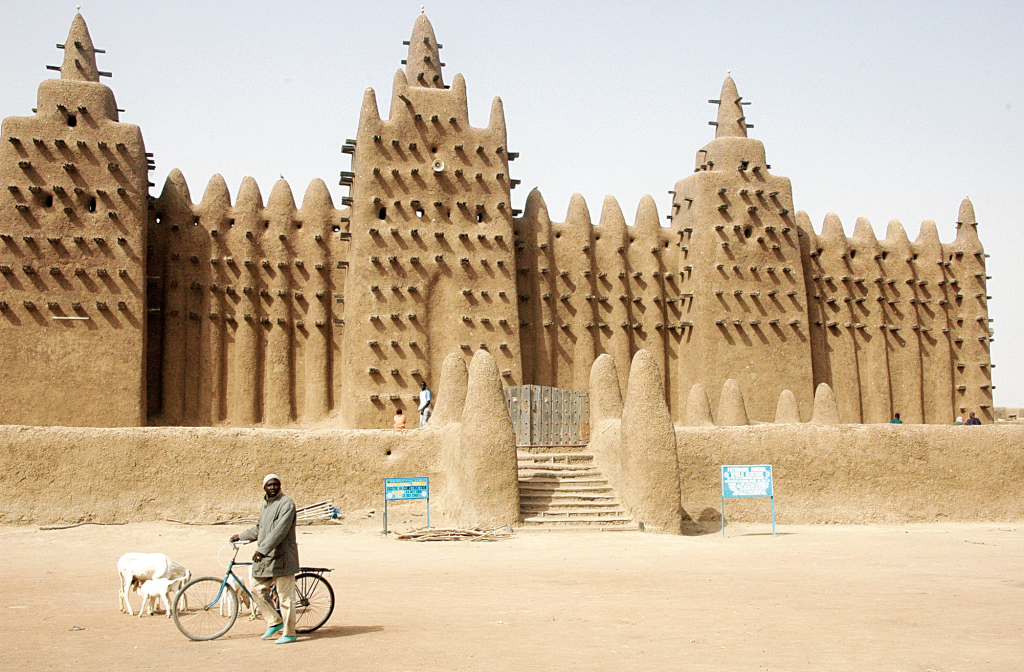
Djenné is home to the world’s largest mud mosque. This is more impressive than it may sound: the building is huge, and manages to be elegant both up close and from a distance. Twice a year all the city’s residents drop everything, cart mud up from the nearby Bani river, and together they re-pack the Mosque walls.
